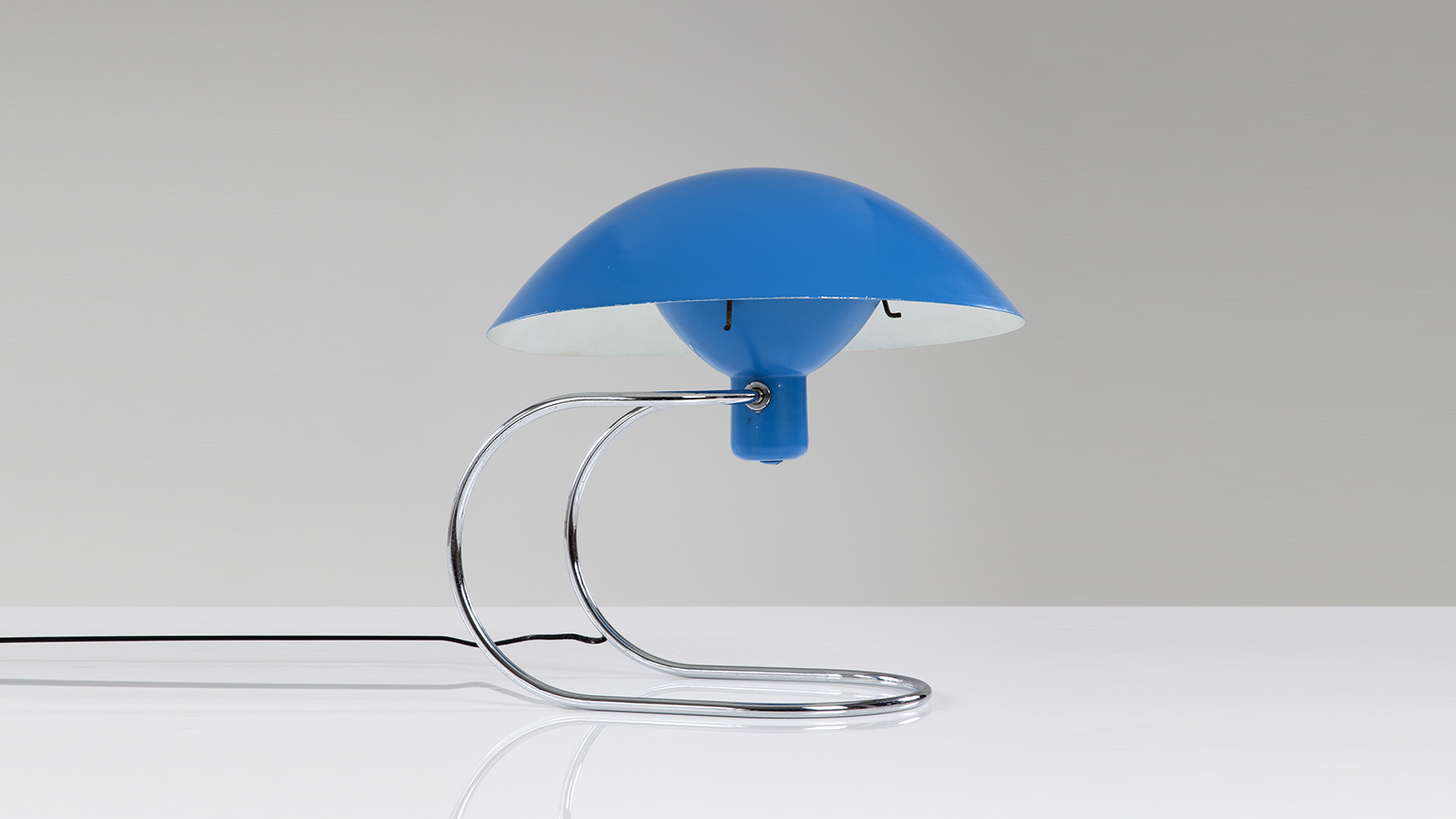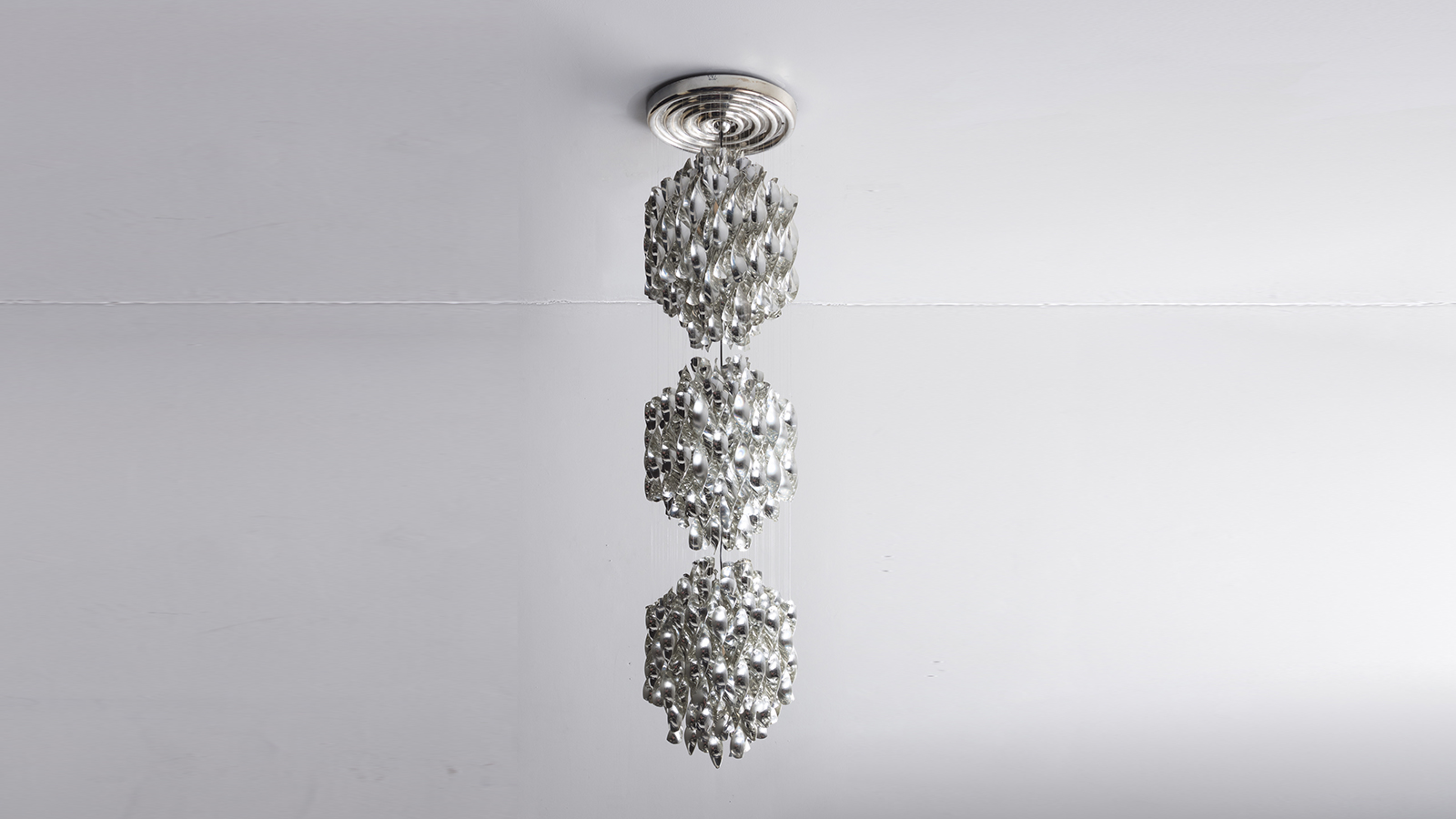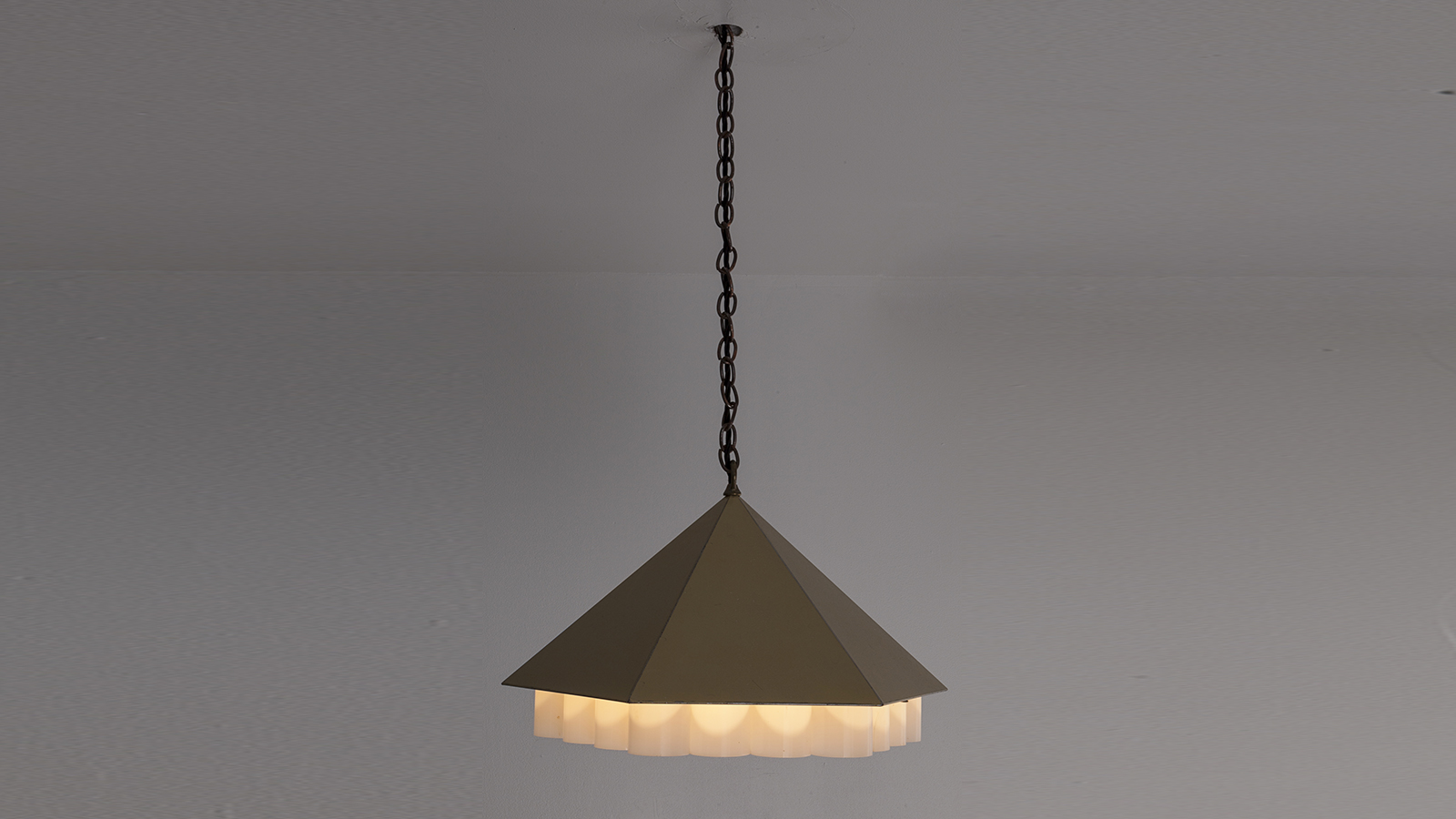Illuminated Design: Metal Lighting in the Postwar Era
Virtual Exhibition
Metal and light have walked hand in hand since Roman times but grew even closer with the invention of the first incandescent light bulb by Thomas Edison in the late nineteenth century. Not only does metal have the conductive properties required for electric currents, but lighting design also had no traditions to follow or defy like other types of objects with longer aesthetic traditions, so innovative designs often appeared first in lamps. After being embraced by modernist movements, combinations between light and metal achieved outstanding quality in the postwar era, when the sudden surplus of metal produced for the war efforts meant that industries and designers were encouraged to think of new uses for the material.
Throughout the mid-century period, designers created metal lamps for different spaces of the home, such as Lucia DeRespinis’s beehive hanging lamp for a dining room. Simultaneously, the lingering association of metal with workspaces inherited from the Industrial Revolution led to several explorations of metal lamps for desks, like Greta von Nessen’s ingenious Anywhere lamp. Many designers also explored the various forms, finishes, and material combinations of lighting design by taking it to the architectural scale, as Verner Panton did with his Spiral series that can hang from ceiling to floor. These experiments led to metal’s full incorporation into the twentieth-century design vocabulary, as it evolved into a means of creating daring proposals to occupy entire spaces, such as Studio A.R.D.I.T.I.’s Ponte light/installation piece.
Join us in examining some of the most exceptional examples of mid-century lighting design in metal through these and other works from R & Company’s collection.


